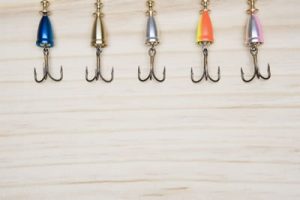From the Loon Preservation Committee:
 Did you know that lead poisoning resulting from the ingestion of lead fishing tackle is the number one cause of documented adult loon mortality in New Hampshire? Since 1989, 176 adult New Hampshire loons have died after ingesting lead tackle. This represents 38% of the documented adult loon mortalities in the state. As fish-eating birds, there are many ways that loons may ingest tackle. According to the Loon Preservation Committee, the most common ways are: consuming a fish
Did you know that lead poisoning resulting from the ingestion of lead fishing tackle is the number one cause of documented adult loon mortality in New Hampshire? Since 1989, 176 adult New Hampshire loons have died after ingesting lead tackle. This represents 38% of the documented adult loon mortalities in the state. As fish-eating birds, there are many ways that loons may ingest tackle. According to the Loon Preservation Committee, the most common ways are: consuming a fish that has broken an angler’s line, striking at a fish being reeled past them in the water, or even striking at the piece of tackle itself as it is reeled in (mistaking the shiny, moving object for a small fish). Because loons are most often dying of lead poisoning after ingesting lead tackle that is in active use, there is an easy way to prevent unnecessary loon deaths: ending the use of lead fishing tackle in our lakes.
that has broken an angler’s line, striking at a fish being reeled past them in the water, or even striking at the piece of tackle itself as it is reeled in (mistaking the shiny, moving object for a small fish). Because loons are most often dying of lead poisoning after ingesting lead tackle that is in active use, there is an easy way to prevent unnecessary loon deaths: ending the use of lead fishing tackle in our lakes.
Do you have an old tackle box that you haven’t looked through in a while? Please take a moment this summer to look through it and remove any lead tackle. If you find lead tackle, you can exchange it for a $10 voucher at a store participating in the Loon Preservation Committee’s Lead Tackle Buyback Program. A list of these stores can be found at www.loonsafe.org. Not sure if your tackle is made of lead? You can differentiate lead tackle with a few easy tests:
 1) If the tackle is unpainted, rub it against a piece of paper. Lead will leave a gray streak behind.
1) If the tackle is unpainted, rub it against a piece of paper. Lead will leave a gray streak behind.
2) Lead is a soft metal. If you can scratch or dent a piece of tackle with your fingernail or a pair of pliers, it is likely made of lead.
3) Date and location of purchase: If your tackle was purchased in New Hampshire prior to the year 2000, it is highly likely to contain lead. Jigs purchased in New Hampshire between 2000-2016 are moderately likely to contain lead. Tackle purchased outside of New Hampshire is more likely to contain lead because New Hampshire has the strictest lead tackle laws in the nation.